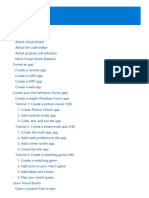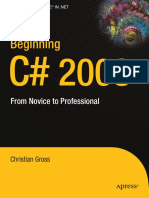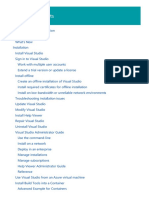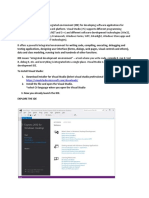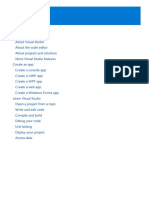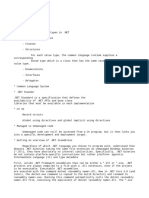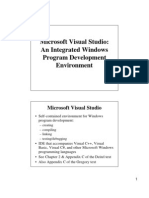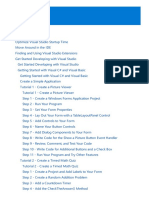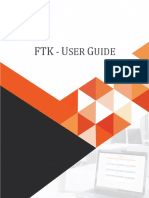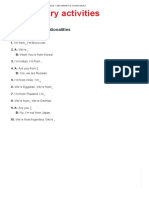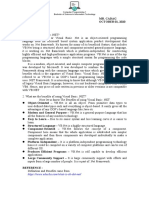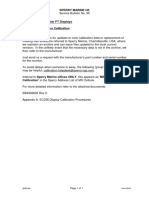0% found this document useful (0 votes)
5 views8 pagesModule 1.1 - VisualStudio 2 1
Visual Studio.NET is a comprehensive integrated development environment (IDE) from Microsoft designed for developing various applications, featuring an intelligent code editor, debugging tools, and version control integration. It supports multiple programming languages and provides tools for cloud integration, mobile development, and DevOps. The document outlines the application anatomy, key features, commands, and how to work with NuGet packages and configuration settings.
Uploaded by
saipriyagopishettiCopyright
© © All Rights Reserved
We take content rights seriously. If you suspect this is your content, claim it here.
Available Formats
Download as DOCX, PDF, TXT or read online on Scribd
0% found this document useful (0 votes)
5 views8 pagesModule 1.1 - VisualStudio 2 1
Visual Studio.NET is a comprehensive integrated development environment (IDE) from Microsoft designed for developing various applications, featuring an intelligent code editor, debugging tools, and version control integration. It supports multiple programming languages and provides tools for cloud integration, mobile development, and DevOps. The document outlines the application anatomy, key features, commands, and how to work with NuGet packages and configuration settings.
Uploaded by
saipriyagopishettiCopyright
© © All Rights Reserved
We take content rights seriously. If you suspect this is your content, claim it here.
Available Formats
Download as DOCX, PDF, TXT or read online on Scribd
/ 8

